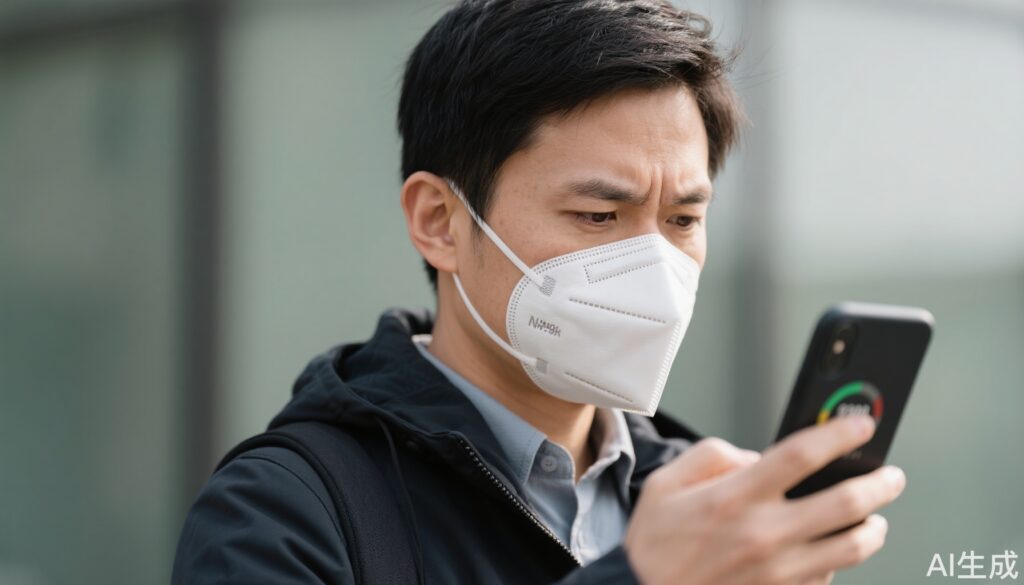Introduction
Air quality is becoming an increasingly pressing topic as pollution levels rise, often reflected in the dreaded PM2.5 monitoring alerts. PM2.5 refers to particulate matter with a diameter of less than 2.5 micrometers, which can penetrate deep into the lungs and even enter the bloodstream, leading to a wide range of adverse health effects. The Air Quality Index (AQI) provides a measure of air pollution and its potential impact on health, and a surge in AQI values can ignite discussions on social media about protective measures, such as air purifiers and masks.
As the public seeks to navigate this challenging environment, two common questions emerge: Are household air purifiers necessary? What are the differences between N95 respirators and standard surgical masks in protecting against PM2.5? This article explores these concerns, reflecting on the evidence to support our choices in safeguarding our health.
What the Data Tell Us
PM2.5 pollution is a well-documented public health issue associated with various outcomes, including respiratory illnesses, cardiovascular diseases, and even premature mortality. According to the World Health Organization (WHO), exposure to fine particulate matter is responsible for about 4.2 million premature deaths globally each year. The Centers for Disease Control and Prevention (CDC) emphasizes that vulnerable populations—including children, the elderly, and people with pre-existing health conditions—face heightened risks especially when AQI ratings hit dangerous levels.
When it comes to protective measures, air purifiers are often touted as essential indoor air quality enhancers. Research indicates that high-efficiency particulate air (HEPA) filters are effective at capturing PM2.5 particles. A systematic review published in the journal Environmental Health Perspectives found that indoor air purifiers can significantly decrease levels of indoor particulate matter, with potential benefits for respiratory health. However, the effectiveness of these devices depends on several factors, including room size, the presence of airflow, and the frequency of filtering.
Similarly, masks are a common approach to mitigate exposure to airborne particles. The N95 respirator is designed to filter out 95% of very small (0.3 microns) particles, including PM2.5, while standard surgical masks do not provide the same level of filtration. A comparison study in the journal Aerosol Science and Technology demonstrated that N95 respirators outperform surgical masks in terms of PM2.5 filtration efficiency.
Misconceptions about Air Purifiers
Despite the benefits of air purifiers, several misconceptions exist:
1. **Air Purifiers Eliminate All Indoor Pollutants**: Many believe that air purifiers can remove all contaminants, including gases and odors. However, standard HEPA filters are primarily effective against particulate matter, not gaseous pollutants.
2. **Any Air Purifier Works Equally Well**: Not all air purifiers are created equal. Devices need a true HEPA filter and appropriate Clean Air Delivery Rate (CADR) to be effective against PM2.5.
3. **Usage is Optional**: With rising AQI levels, assuming that indoor air is safe without air purification can be misleading. Poor indoor air quality can still threaten health, especially in urban areas.
Practical Recommendations for Protecting Yourself from PM2.5
Here are some practical tips for using air purifiers and masks effectively:
**Air Purifiers:**
– **Select the Right Purifier**: Look for purifiers that contain HEPA filters and have a CADR rating suitable for the size of your room.
– **Maintain Your Device**: Regular filter replacement is crucial for maintaining optimal performance.
– **Consider the Room Layout**: Ensure that the air purifier is placed in a location where airflow is unobstructed to maximize its effectiveness.
**Masks:**
– **Choose the Right Type**: For high PM2.5 exposures, opt for N95 respirators for maximum protection. Ensure a proper fit to avoid air leaks around the edges.
– **Usage Duration**: Be mindful of how long you wear the mask, as prolonged wear can become uncomfortable, impacting compliance.
– **Educate Yourself**: Understand how to wear masks correctly to ensure effectiveness—tightness, proper seals, and correct application are vital.
Expert Insights
Experts recommend a multi-faceted approach to dealing with PM2.5 pollution. Dr. Lisa Wang, a respiratory physician, underscores the importance of combining indoor air management with personal protection: “Investing in a quality air purifier is wise, but during pollution spikes, don’t underestimate the value of wearing a properly-fitted mask when outdoor conditions are poor.”
Dr. John O’Neill, an environmental health researcher, echoes this sentiment, adding that individuals also need to stay informed about local AQI levels to make timely decisions about outdoor activities. Staying inside during high pollution days, especially for sensitive groups, can significantly mitigate health risks.
Patient Scenario: The Case of Sarah Thompson
Sarah Thompson, a 32-year-old graphic designer from Los Angeles, noticed that her seasonal allergies worsened during the past summer, coinciding with rising AQI levels in her neighborhood. Concerned about her exposure to PM2.5, she invested in a high-rated HEPA air purifier for her living space. Additionally, she took to wearing an N95 mask during outdoor runs and avoided outdoor exercise on days when the AQI marked unhealthy levels.
As a result of these measures, Sarah reported a noticeable reduction in her allergy symptoms and improved overall health. Her experiences underscore the importance of proactive health management in the face of environmental challenges.
Conclusion
The increasing prevalence of PM2.5 pollution presents real health challenges that necessitate informed decisions regarding protective measures. Understanding the differences between air purifiers and masks—and utilizing them appropriately—can significantly enhance health outcomes amidst declining air quality. As the implications of pollution become ever more pressing, individuals and communities must prioritize air quality awareness and personal preventive strategies. It is essential to combine technological solutions with awareness and education to navigate this multifaceted issue effectively.
By adopting these approaches and understanding the underlying science, we can empower ourselves to take charge of our health in an environment increasingly affected by pollution.
References
1. World Health Organization. (2021). Air quality and health. Retrieved from https://www.who.int/news-room/fact-sheets/detail/air-quality-and-health
2. US Centers for Disease Control and Prevention. (2021). Air Quality – Protecting Your Health. Retrieved from https://www.cdc.gov/air/airquality.html
3. Kwon, S., Kim, K., & Kim, S. (2018). Performance of portable air cleaners in reducing PM2.5 exposure during high pollution episodes. Environmental Health Perspectives, 126(12).
4. Lee, J., & Yang, S. (2020). Particulate filtration efficiency of common masks and respirators against PM2.5. Aerosol Science and Technology, 54(6).


